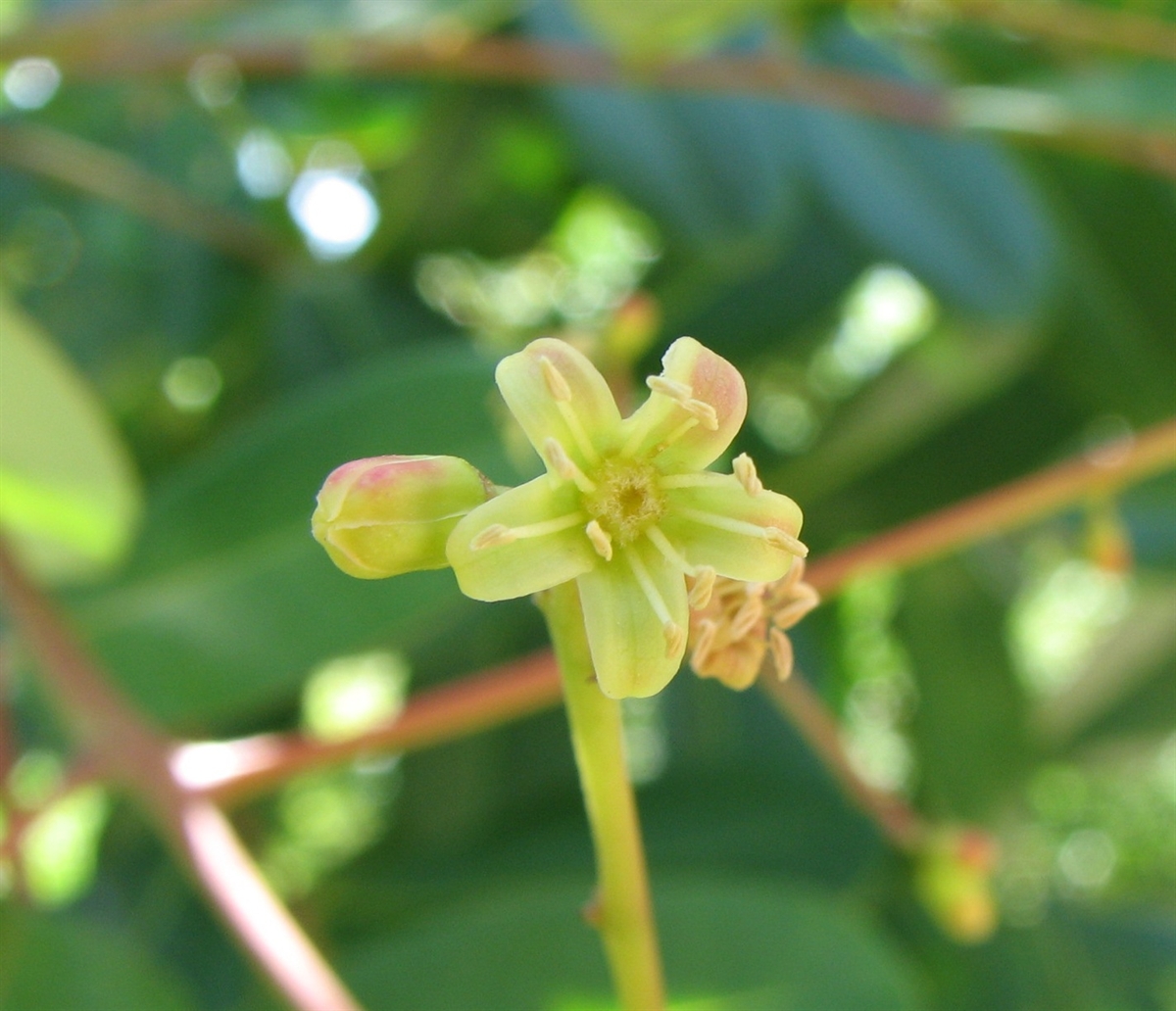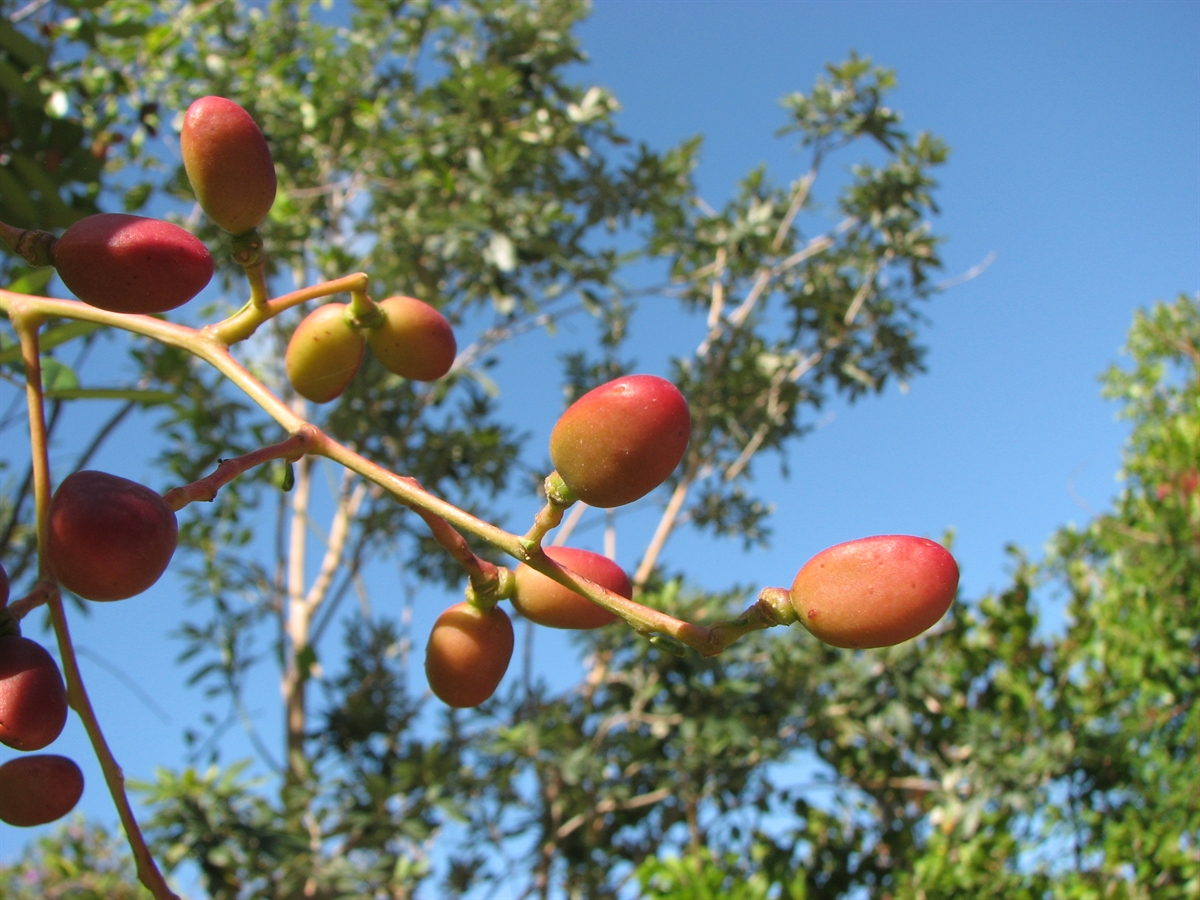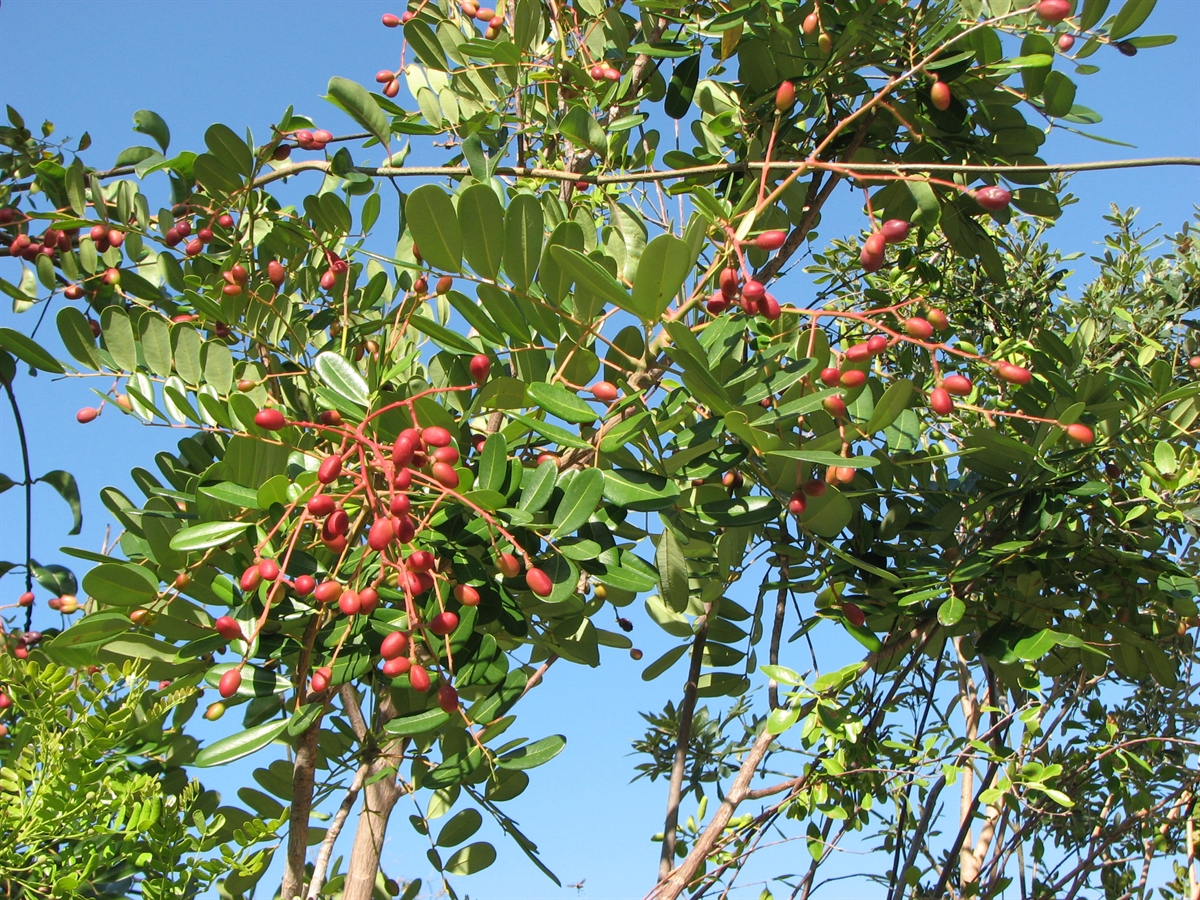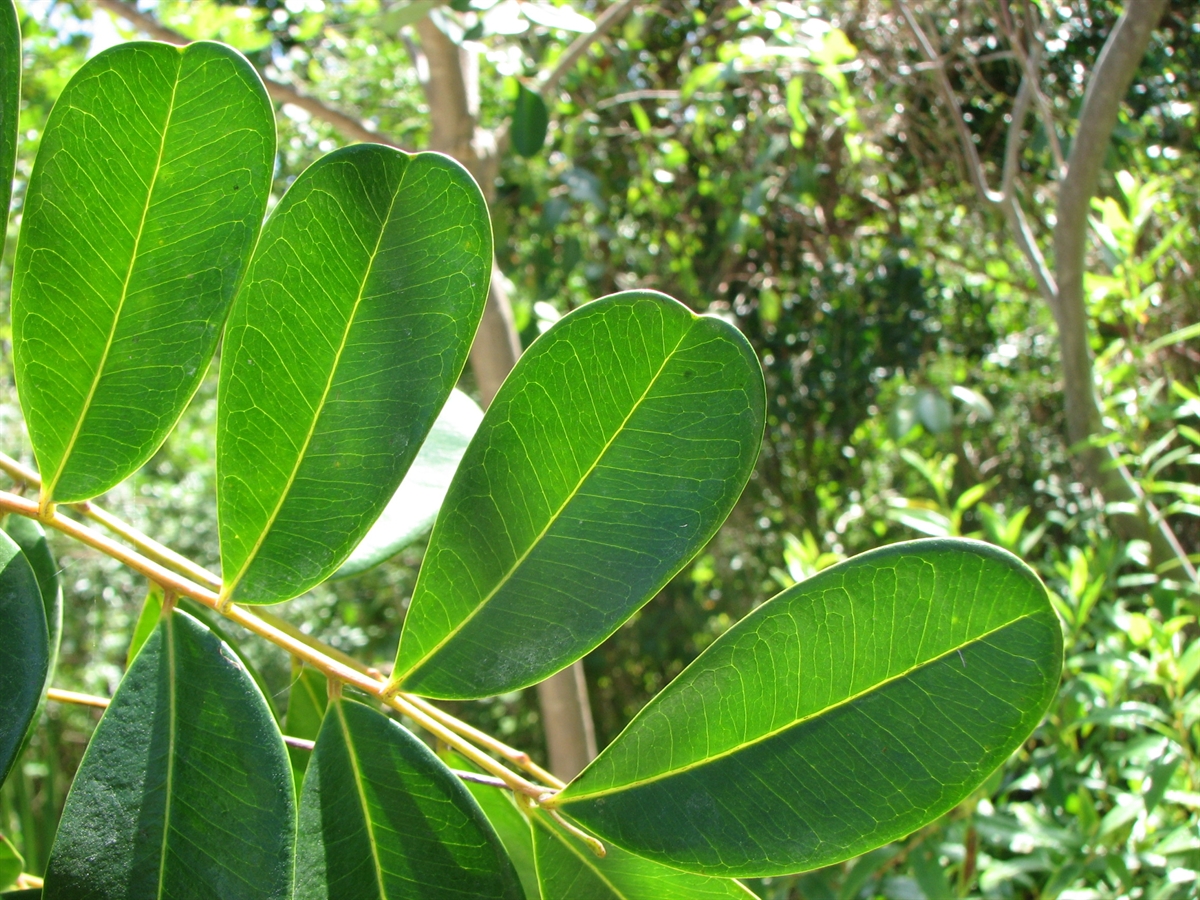Habit: Simarouba glauca grows as a tree to 10 meters in height with a trunk to 30 cm in diameter. The leaves are arranged alternately, are odd pinnately compound, to 40 cm in length, with 10-20 leaflets. The leaflets are up to 10 cm in length, dark green above, lighter below, with an entire margin and rounded leaf apex
Simarouba glauca is polygamo-dioecious. The incomplete, imperfect, actinomorphic flowers are arranged in terminal and axillary panicles. The calyx has 5 unfused, greenish sepals. The corolla has 5 unfused yellowish- white overlapping petals. Staminate flowers have 10 stamens and no ovaries. Carpellate flowers have 10 nonfunctional stamens and 5 unfused ovaries each with a single locule and seed. Occasionally there are perfect flowers produced on either the staminate or carpellate trees. The fruit is a purple/black drupe at maturity.
Habitat: Simarouba glauca grows in Dry Broadleaf Evergreen Formation- Forests/Shrublands (coppice).
Distribution: Simarouba glauca occurs in the northern island groupings of the Lucayan Archipelago as well as Florida, Cuba, and Mexico south through Central America.
Medicinal/Cultural/Economic usage: Simarouba glauca has been used to treat fevers (malaria) and colds, dermatological problems (wounds, sores) and gastrointestinal issues (dysentery).
It has been harvested for resin, an edible oil, and other pharmaceutically useful chemicals and is used in the horticultural industry.



